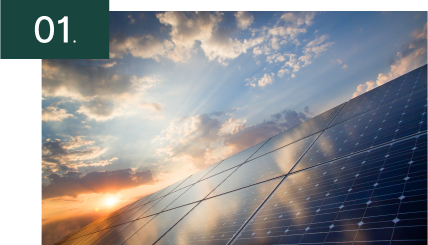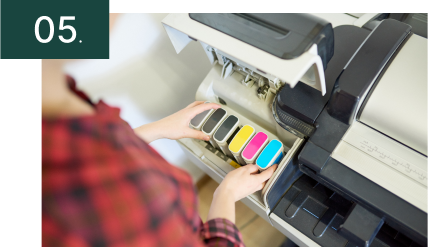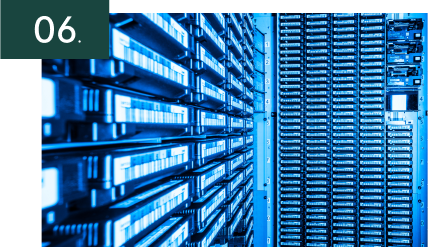Did you know that magnetic tape storage is the green wave of the future? Yes, the same storage method used in the 1950s is set to provide ample data storage with a significantly reduced carbon footprint over other storage options. Find out more below.

Data is the most prolific creation of mankind in this modern era. In 2020, the human population created 2.5 quintillion bytes of data a day.
Let's put that in perspective:
Here’s what 2.5 million looks like: 2,500,000
Here’s 2.5 quintillion for comparison: 2,500,000,000,000,000,000
Or, for a more practical perspective: 2.5 million seconds equates to close to 29 days whereas 2.5 quintillion seconds equates to over 79 billion years.
That number is only going up. Estimates are that by 2025, people will generate around 463 quintillion bytes of data daily.
While some data generated may be "throwaway" data, most data is stored for purposes such as compliance, marketing, computing, analytics and supporting business and consumer processes.
According to Statista, the storage capacity of data centers in 2021 was around 2,300 quintillion bytes — or enough to save around 2.5 years of data at the 2020 rate of production. At the estimated 2025 rate of data production, that capacity would only account for about 5 days’ worth of data!


But modern data centers (which often rely on technology such as servers, hard disks and solid state drives) are already an enormous draw on energy resources. In 2020, data centers accounted for 2% of the energy consumption across the globe.
How does that impact the climate? Without interventions to reduce energy consumption, some believe that data centers could account for 20% of global electricity use by 2025. And by 2040, simply storing all this digital data could generate 14% of the total emissions in the world. In 2019, all of the energy-related carbon dioxide emitted in the United States accounted for roughly 15% of the global number, to provide some perspective.
All these numbers tell a story. It's one where data storage is a big part of current and future climate change. According to NASA, 2020 was the hottest year in recorded history, and the seven years leading up to that were the hottest years on record.
Scientists note that glaciers are melting faster than ever, adding 328 billion tons of liquid to oceans annually.
These changes are symptoms of global warming, which is contributing to a variety of natural phenomena across the globe. That includes larger and more frequent storm events, struggles for certain types of plant and animal species, increased costs for interior climate control and many other consequences.
But can reducing the energy consumption of data storage have a positive impact on climate change? If carbon dioxide emissions have a role in driving negative climate change, the answer is yes. If new technologies can reduce energy consumption and the related emissions, keeping data storage from accounting for a substantial portion of global emissions in the future, that would have a positive impact on climate change.
Fujifilm has remained dedicated to enhancing the quality of the environment, supporting sustainability initiatives and reducing CO2 emissions. Its approach to sustainability is two-pronged. First, Fujifilm dedicates resources to developing sustainable best practices throughout its manufacturing processes. Second, it delivers an eco-friendly form of data storage. Check out these seven ways Fujifilm and tape storage are working to reduce energy consumption and benefit the environment.


Fujifilm launched an initiative in 2013 to reduce its grid-based energy consumption — and thus its carbon footprint — by developing an increasing reliance on solar energy. It installed 1,870 solar panels at its LTO tape manufacturing facility in Bedford, MA.
But how much does solar energy reduce the energy consumption related to data storage? Fujifilm’s Bedford manufacturing facility makes tape storage, so reducing energy consumption there reduces it for the industry as a whole. And the solar panels have certainly been a success.
Over the course of just six years — from November 2013 through March 2021 — the solar panels produced 4.348 million kWh of energy. That's 4.348 million kWh that the facility didn't have to pull from grid-based electrical resources.
That's an average of 724,000 kWh per year. The average American household uses around 10,650 kWh annually, so the solar initiatives are saving an amount of electricity equal to approximately 68 homes.

Fujifilm replaced more than 3,000 light bulbs in its manufacturing facilities with energy-efficient LED options. That step was enough to reduce the carbon footprint of that facility by a third and reduce annual energy consumption by 650,000 kWh — or the equivalent of about 61 average American homes.
LED lights lead to other long-term environmental and cost benefits. First, they last longer than other forms of lighting. An LED bulb has a useful lifetime that's up to 25 times longer than traditional incandescent bulbs and two to three times longer than options such as halogen or traditional CFL.
In the Fujifilm facilities, that means maintenance departments are replacing bulbs much less frequently, reducing the amount of shipping, packaging, and bulb waste generated.

Fujifilm’s dedication to sustainability can be seen in both in-house recycling initiatives as well as its work in sourcing recycled materials.
A good example of how Fujifilm uses recycling efforts is in its product sourcing and vendor relationships. For example, one of Fujifilm’s vendors provides plastic that's used in packaging the multi-cartridge Library Packs.
The type of plastic that Fujifilm sources for this purpose is known as DPET, which requires 65% less energy to produce than traditional plastics used for packaging purposes. On top of that, Fujifilm sought out a manufacturer for this plastic that was equally committed to the environment. This manufacturer uses 100% recycled wastewater to further reduce its impact on the environment.

That plastic manufacturer is just one in a long line of Fujifilm vendors and business partners that are as dedicated to sustainable, eco-friendly processes as Fujifilm is. The Fujifilm supply chain department works hard to align the company with as many suppliers as possible that complement this commitment to sustainability.
Another example is the supplier that provides the pallets needed to manage storage and delivery of Fujifilm products. This supplier holds a Forest Stewardship Council® (FSC® C112029) accreditation and works to ensure that the wood it uses is sourced in as sustainable a method as possible. That includes actively managing sourcing in a responsible manner to limit clear cutting.
Clear cutting occurs when entire sections of a forest are brought down to the ground, removing the forest cover entirely. Without forest cover, fragile forest ecosystems die off, so even if trees are replanted, permanent damage may have been done. The vendor strives to work with lumber providers that don't treat forests in this way.

Fujifilm takes this approach to every service or item it sources and chooses renewable and eco-friendly resources whenever possible. It also asks its suppliers to do the same if possible.
For example, one printing supplier uses soy ink on all the printed packaging insert cards for Fujifilm products. Soy ink is sustainable for a number of reasons. First, it's biodegradable, which means Fujifilm is not shipping chemicals that could harm the environment or sit around forever on its printed cards. Second, soy ink is efficient. It takes less of this type of ink to do the job than other traditional ink formulas, which means the company is using less product overall.
On top of using sustainable ink, Fujifilm chose to reduce packaging insert cards by size and weight to drive down paper consumption and reduce how much waste ends up in landfills. Plus, when you add up those volume and weight reductions over millions of units, there are small carbon footprint wins when it comes to transporting those lighter-weight goods.

Fujifilm is also helping others commit to greener processes by providing an eco-friendly form of data storage: modern data tape.
Brad Johns Consulting looked at Fujifilm tape storage to understand just how green it really is. The consulting firm looked at a hypothetical example involving 10 PB of cold data.
The example assumed that an organization starting with 10 PB of cold data with a data growth of 35% annually as more data is produced and current data ages out of active processes.
To handle this amount of data for 10 years using only disk-based solutions, you would generate 3,013 tons of CO2. Using a tape solution to archive the cold data during that time would reduce the CO2 emissions all the way down to just 383 tons, reflecting an 87% reduction in emissions.
Consider some other facts that contribute to the eco-friendly nature of tape storage:

Fujifilm is always working to develop cleaner, greener policies, procedures and products. For example, it's working to develop tape storage solutions that could hold 580 TB in a single cartridge, cutting down on not just the carbon footprint of data storage but the actual footprint. Being able to get more data in the same "space" allows data centers to drive down square footage, costs and their own environmental footprint.
 Scroll Up
Scroll Up
Raw storage of data on tape costs around 2 cents per GB. Numbers vary depending on solution type and other factors, but in general, long term multi-petabyte data retention on tape can provide around an 85% reduction in total cost of data ownership when compared to disk solutions.
The total energy consumed by tape systems depends on how much is being stored. But tape has a significant advantage over HDD systems because tape consumes no energy unless being written to or read in a tape drive. Most of time tape sits idle in a library slot or on a shelf in a vault. But in general, when compared to disk-based storage options, tape requires between 80 and 90 percent less energy than constantly spinning HDD systems that generate heat and require cooling.
Tape consumes a drastically low amount of energy when compared to other solutions. It can decrease energy consumption by around 87% when compared to disk storage, for example.
Yes — no matter how you measure it, tape storage is the most eco-friendly data storage solution. If data is cold and inactive, it should not be consuming energy!